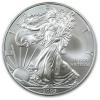| Online: | |
| Visits: | |
| Stories: |

| Story Views | |
| Now: | |
| Last Hour: | |
| Last 24 Hours: | |
| Total: | |
Monetary Aggregates Compared

acting-man.com / Pater Tenebrarum / February 13, 2015
The Fed has Provided the Bulk of Money Supply Growth since 2008
We have discussed the topic of money supply growth extensively in these pages over time. Below is a brief recap of how the system works in the US. Note that although fractional reserve banking and central bank-directed and backstopped banking cartels are in place all over the world, there are several “technical” differences between them. So the workings of the US system cannot be transposed 1:1 to e.g. Japan’s system or the euro system.
There are two possibilities of growing the fiat money supply: In “normal” times, commercial banks will extend loans which are partially “backed” by fractional reserves. These loans create new deposit money, which once again can serve as the basis of further credit creation, which again creates new deposit money, and so forth. It can be shown mathematically that based on a hypothetical fractional reserve requirement of 10%, extant deposit money in the system can be grown 10-fold (for a detailed discussion of the “money multiplier”, see here).
In actual practice, reserves have not represented a constraint for credit and money supply growth by commercial banks for quite some time. In the US banks can e.g. “sweep” money from demand deposits into so-called MMDAs (money market deposit accounts) overnight, letting these funds “masquerade” as savings deposits, which allows them to circumvent reserve requirements. Moreover, if credit demand is so strong that interbank lending rates (i.e., the Federal Funds rate) threaten to rise above the target rate set by the Federal Reserve, the central bank will supply additional reserves to the extent necessary to keep the rate on target. Thus the required fractional reserves will be supplied even if commercial banks don’t have sufficient excess reserves to lend to banks short of reserves.
None of this has been of importance since the 2008 crisis however, as “QE” has created such an overhang of excess reserves that interbank lending rates have continually wallowed close to the lower end of the 0.00%-0.25% Federal Funds target corridor. Moreover, up until late 2013/early 2014, commercial bank credit growth had slowed to a crawl anyway. So barely any money supply growth has come from the banking sector after the crisis. Enter the Fed, and “QE”.
The post Monetary Aggregates Compared appeared first on Silver For The People.
Source: http://silveristhenew.com/2015/02/13/monetary-aggregates-compared/



